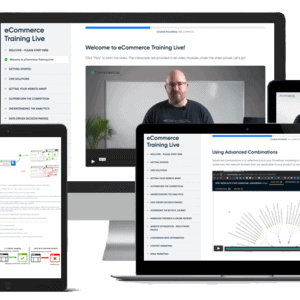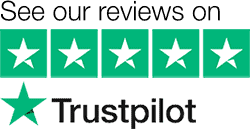Campaign Strategy
- Business Goals Alignment: Understanding and aligning with your revenue targets and business objectives.
- Target Audience Analysis: Identifying and segmenting the audience to target with the campaigns.
- Keyword Research: Comprehensive research to identify profitable keywords and negative keywords to exclude.
- Competitive Analysis: Reviewing competitors’ ad strategies to identify opportunities and threats.
- Budget Planning: Allocating budget across campaigns, ad groups, and keywords for optimal ROI.
- Channel Strategy: Deciding which platforms (Google Ads, Bing Ads, etc.) to use based on audience and goals.
Campaign Setup and Implementation
- Account Structure: Setting up campaigns, ad groups, and keywords for easy management and reporting.
- Ad Copywriting: Crafting compelling ad copy that aligns with the keywords and landing pages.
- Landing Page Optimization: Ensuring landing pages are optimized for conversion and relevance to the ad copy.
- Conversion Tracking: Implementing tracking for conversions, such as form submissions or purchases.
- Ad Extensions: Adding relevant ad extensions to improve visibility and CTR, such as site links, callouts, etc.
- Bid Management: Setting initial bids for keywords and adjusting based on performance.
PPC ROAS (Return on Ad Spend) Improvement
- Performance Analysis: Deep dive into current campaigns to analyze cost per acquisition (CPA) versus customer lifetime value (LTV).
- Conversion Rate Optimization: Testing and improving landing pages, ad copy, and user journeys to increase conversions.
- Bid Optimization: Using manual adjustments and automated bidding strategies to optimize for the best performing keywords and ads.
- Budget Reallocation: Shifting budget from low-performing campaigns to those with higher ROAS.
- Audience Refinement: Adjusting targeting to focus on high-intent and high-converting segments.
- Cross-Channel Synergies: Identifying opportunities to improve ROAS through integrated strategies across different marketing channels.
Keyword Audit & Optimization
- Search Query Analysis: Reviewing actual search terms triggering your ads and refining match types for better relevance.
- Keyword Pruning: Removing underperforming or irrelevant keywords to reduce wasted spend.
- Long-Tail Expansion: Adding long-tail keywords that could convert at a higher rate or lower cost.
- Negative Keywords: Continuously updating the list of negative keywords to prevent irrelevant ad impressions.
- Quality Score Assessment: Evaluating Quality Scores and making optimizations to improve them, thus reducing CPC.
- Competitive Keyword Insights: Analyzing competitors’ keyword strategies to identify gaps and opportunities.
Ad Testing & CTA (Call to Action) Tests
- Split Testing: Running A/B tests on different ad variations to determine which messages resonate best with the target audience.
- Multivariate Testing: Testing multiple variables within ads, such as headlines, descriptions, and display paths.
- CTA Variations: Experimenting with different calls to action to see which leads to higher conversion rates.
- Visual Elements: For display and video ads, testing different images, colors, and layouts.
- Ad Scheduling: Testing ad performance at different times of the day and week to optimize ad delivery.
- Landing Page Pairing: Ensuring that each ad leads to a landing page that matches the ad’s offer and CTA for a consistent user experience.
AI Monitoring & Automations
- Bid Management Tools: Utilizing AI-driven tools to adjust bids in real-time based on conversion probability.
- Fraud Detection: Implementing AI monitoring to identify and prevent click fraud or anomalous traffic patterns.
- Performance Alerts: Setting up automated alerts for significant performance changes or budget consumption.
- Predictive Analytics: Using AI to forecast campaign performance and suggest budget adjustments.
- Automated Rules: Creating rules for pausing underperforming ads, adjusting bids, or reallocating budget without manual intervention.
- Dynamic Creative Optimization: Leveraging AI to automatically test and serve the best-performing ad variations to the right audience segments.
Ongoing Optimization and Management
- Performance Analysis: Regularly reviewing campaign metrics to assess performance.
- A/B Testing: Testing different ad copies, landing pages, and calls to action to improve conversion rates.
- Bid Adjustment: Modifying bids to maximize ROI while staying within budget.
- Quality Score Optimization: Improving ad relevance, landing page quality, and CTR to enhance Quality Scores.
- Keyword Refinement: Adding new keywords or removing underperforming ones.
- Seasonal Adjustments: Making campaign adjustments based on seasonality and trends.
Reporting and Communication
- Performance Reports: Delivering regular reports on campaign performance, including KPIs like CTR, CPC, and ROI.
- Insights and Analysis: Providing insights into what the data means and how it informs strategy.
- Regular Meetings: Scheduling calls or meetings to discuss performance and strategic adjustments.
- Transparency: Ensuring full visibility into account performance and spend.
- Recommendations: Offering proactive suggestions for campaign improvements.
- Alerts and Updates: Notifying of significant changes or opportunities in the PPC landscape.
Advanced Strategies (as needed)
- Remarketing/Retargeting: Implementing campaigns to target users who have previously interacted with your site.
- Display Advertising: Utilizing display networks for brand awareness and retargeting.
- Shopping Ads: For e-commerce, setting up and managing Google Shopping campaigns and product feeds.
- Video Advertising: Leveraging platforms like YouTube for video ads targeting relevant audiences.
- Mobile Optimization: Tailoring campaigns for mobile users, including mobile-specific ads and bid adjustments.
- International Campaigns: Managing and optimizing campaigns targeting users in different countries and languages.
*Not all services are required for all clients
** $499 service fee per month +10% of campaign spend (industry average is 15-18%)







